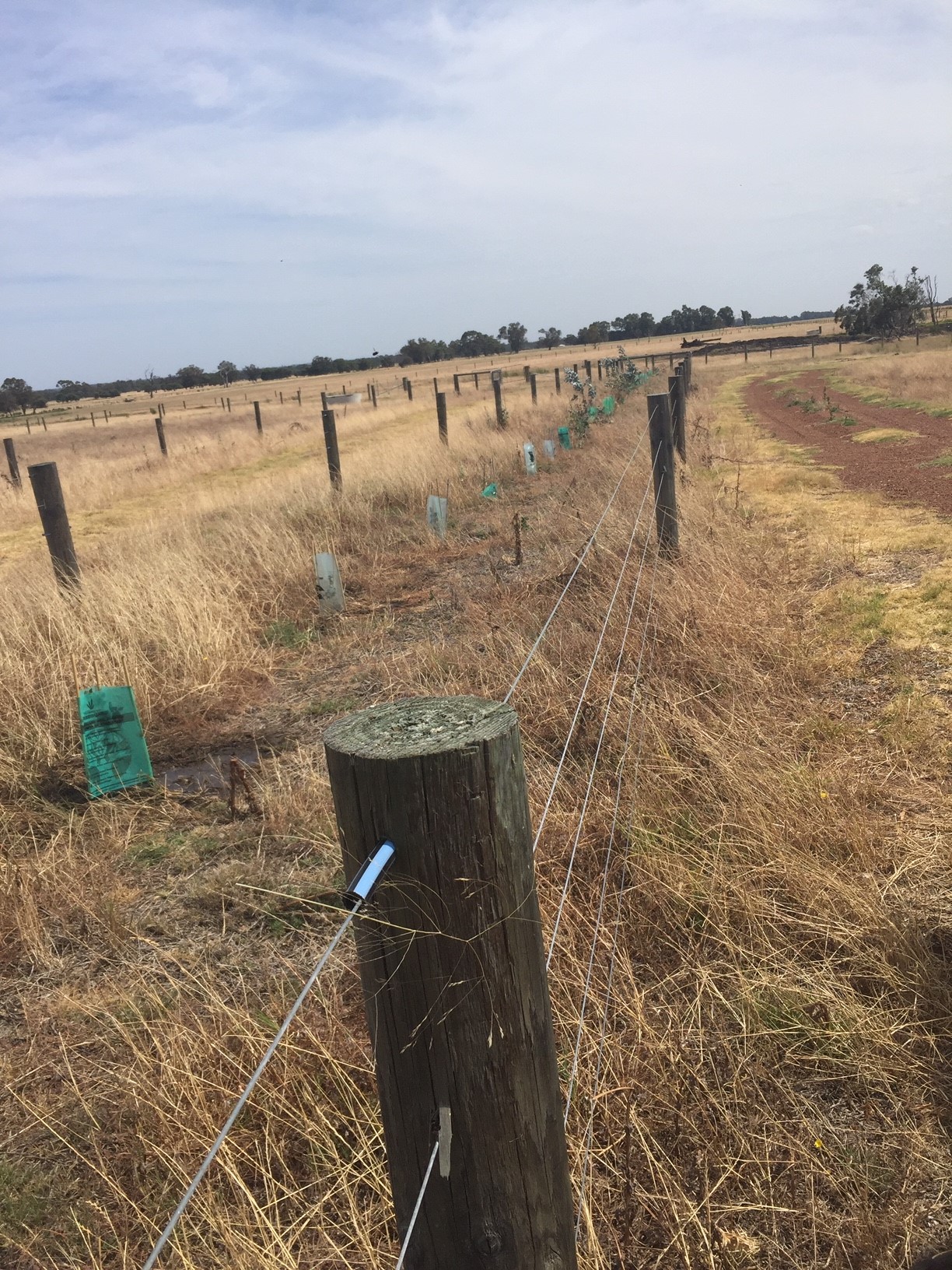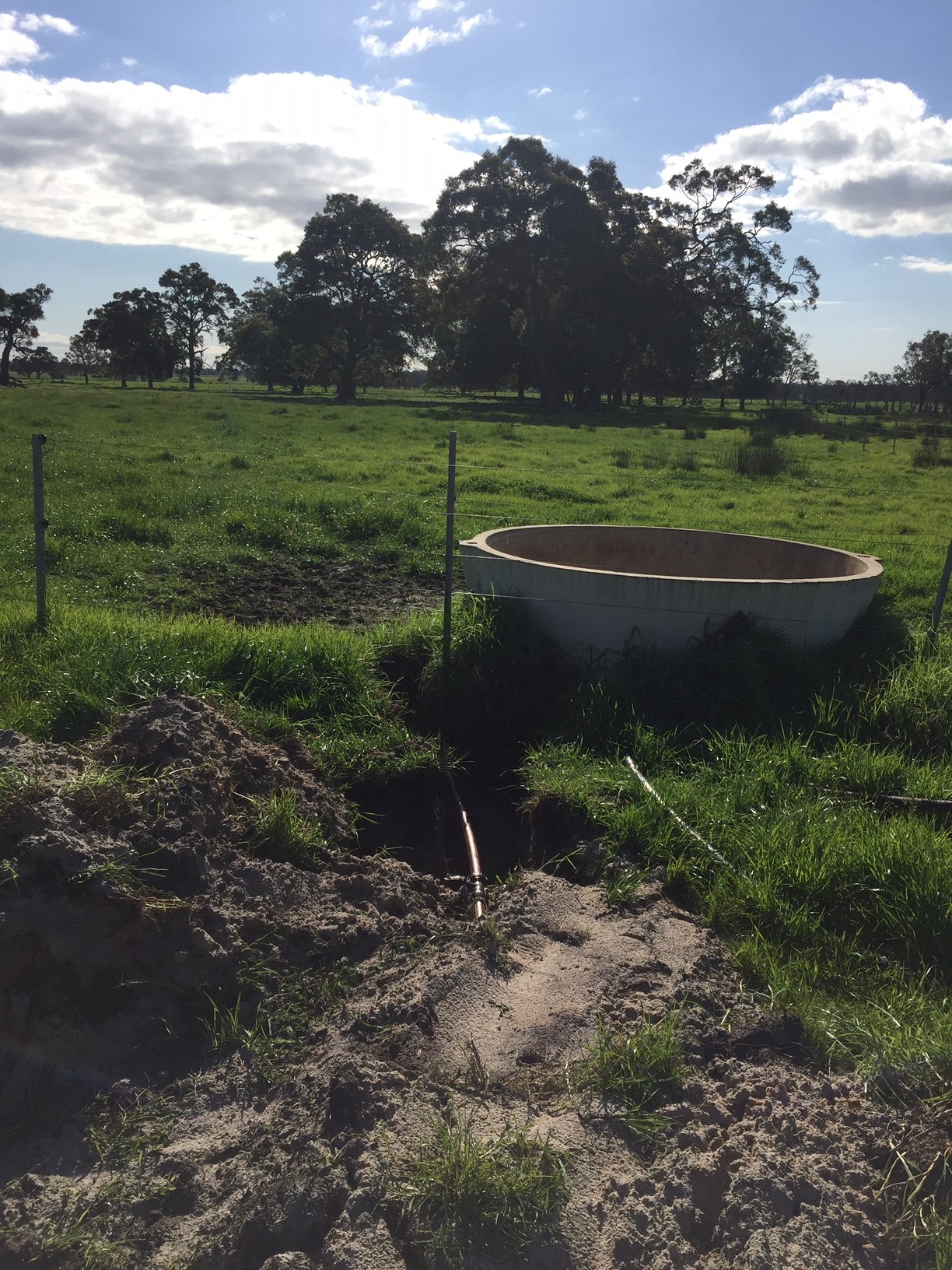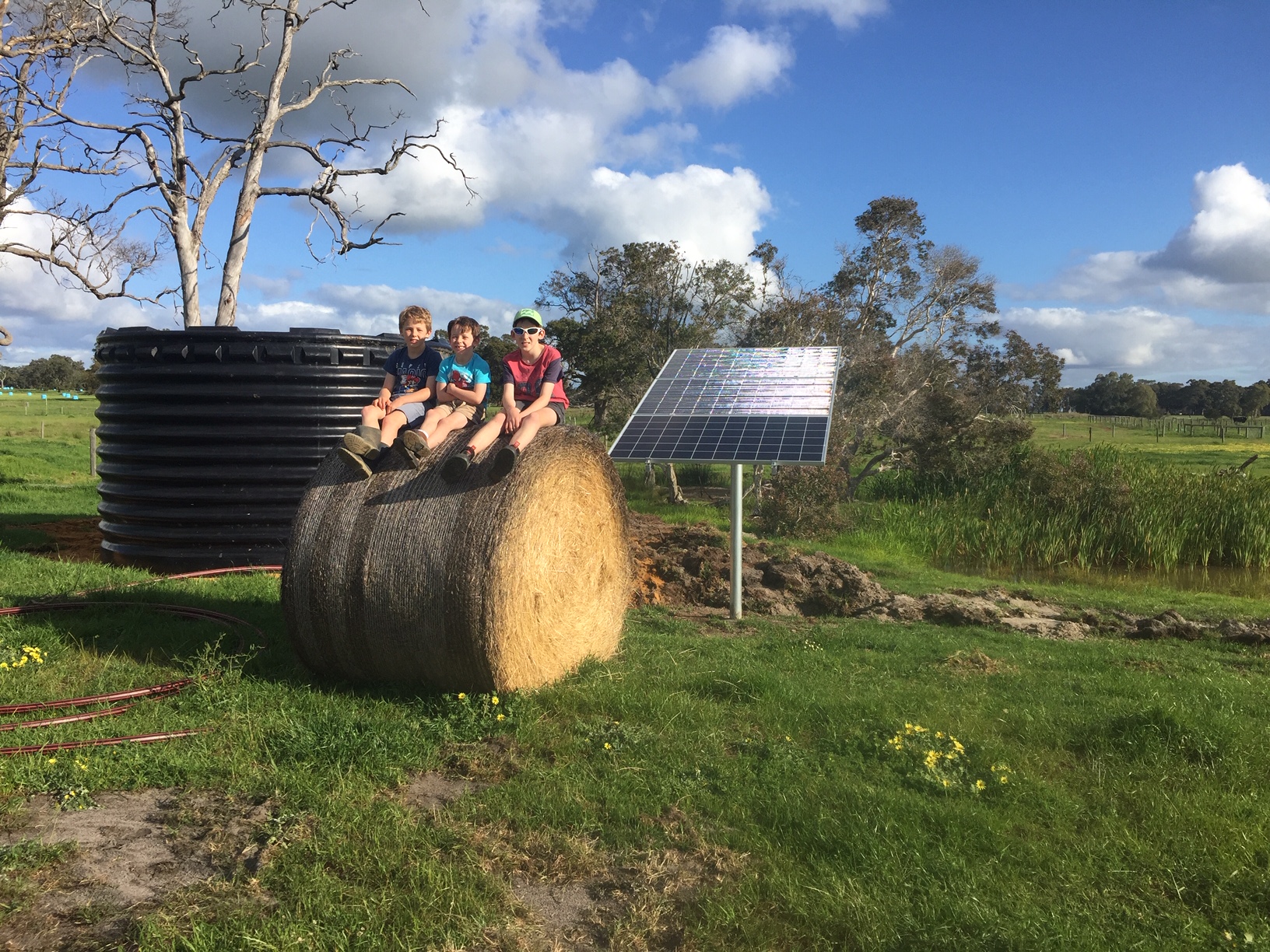Protecting natural creeks from cattle grazing
Case Study
2019 Lion Dairy Pride Landcare Grant
| Grant Recipient: | Warrick Tyrrell |
| Farm/Dairy Name: | KG & KM Tyrrell |
| State/Town: | Waterloo, Western Australia |
| Project Name: | Protecting natural creeks from cattle grazing |
| Grant Amount: | $10,000 |
Background
In Waterloo Western Australia, Warrick Tyrrell operates a 120-hectare dairy with a herd of 300 to 330 milking cows who produce 2.5 million litres of milk each year. A quarter of the property is under irrigation supplying part of the feed base over summer.
The cattle water at a creek that runs through the property, however this comes at an environmental cost as the banks have become degraded risking water quality and salinity. Realising he couldn’t continue to use the creek as a water source, Warrick decided to fence it off, replant the banks with native trees and install water troughs.
As a milk supplier to Lion, Warrick applied for a Dairy Pride Landcare Grant to help fund the purchase of plants to rejuvenate the creek bank. After finding out his grant application for $10,000 in funding was successful, he began to plan the work and infrastructure needed.
Project Overview, Purpose and Goals
Warrick said the project included the installation of a solar water pump and a tank to provide livestock with water. To stop erosion and stabilise the banks the creek needed to be fenced off and planted with trees that would provide the additional benefit of cutting down salinity.
By fencing off the creek, Warrick could continue to graze cattle on pastures near the creek without damaging it.
Over time Warrick expects the health of the creek and the land around it will be improved making the operation more sustainable. On top of these benefits the use of solar to power the water pump means no additional emissions will be generated and the native trees will encourage and support more native wildlife that’s found on the property.
Project Outcomes
The solar pump was installed and is drawing on water from the dam and supplying water to the troughs. The creek banks have been fenced with cattle kept away from the newly planted trees.
In total, 350 tree seedlings were purchased with planting continuing the length of the fenced area.
The only downside of the project was the length of time it took for the pump to arrive which delayed the start of the project. Warrick says this could be easily overcome by ordering it sooner.
There was also a problem with pest rabbits who ate some of the seedlings, which Warrick overcame by placing tree protectors around the plants.
Conclusion
Now completed, Warrick said he expected the project will improve the sustainability of the operation.
“If the creek banks had continued to be damaged, more of the adjacent land would have become waterlogged, saline and unsuitable for growing pasture, cutting down on our productivity,” Warrick said.
On an ongoing basis Warrick will monitor the pump and fencing to maintain and repair them to ensure the cattle are watered and keep off the creek banks.
“A simple and easy process to gain some assistance with a great project,” Warrick said when asked about the grant process.






